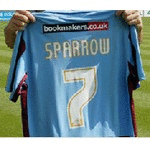Background
In December, SUFC released financial figures for the year ended 30th June 2012 as part of the club’s annual report to shareholders. At a meeting with SUFC Directors, the Iron Trust suggested it would be helpful for fans to have a more detailed insight into the current budget and to be given figures relating to the income and expenditure at the club during the current season. The club has agreed to give these details to us, and the Trust has attempted to give a simplified explanation to help fans understand the current financial situation at SUFC. The figures show the club’s budget prepared before the start of the season and are shown net of VAT.
Income
Gate receipts
Gate receipts from all league and cup games are predicted to be £1,033,629. As previously indicated, this figure is excluding VAT. (It is worth noting that VAT is paid on gate receipts, so on a £20 ticket the club gets £16.67 and the rest is paid to the government). This figure was based on average gates of 3,600 with the average price paid for admission to the ground as £10 per head (excluding VAT).
The average gate in the 2011/12 season was 4,339. It is worth noting that up to 5 January 2013, the average home gate this season has been 3,304.
Other income
As well as gate receipts the club receives income from three other sources: Football League and TV money; youth team income; and commercial activity. Commercial activity represents money from advertising, sponsorships, the shop, the programme, away travel, the Iron Bar and restaurant and catering/hospitality activities etc. It is projected to bring in £664,365 (excluding VAT) after any associated costs have been paid.
The Club also receives grant funding towards the cost of running the youth setup. Each year it has to spend a minimum of £315,000 in order to achieve Academy Category 3 status of which £210,000 is received in grant funding. The grant funding comes in from a mixture of sources (the FA, the PL, the FL and the PFA. The total received for youth team activity in grants and sponsorship is expected to be £226,000. For the Premier League take on what the new academy system will bring see the Premier League website.
The other main source of income is the Football League central distribution. This is £887,000 for this season and compares with £1,192,704 received last season. TV monies are included in this sum, with extra received if a match is televised.
Since July the club has received transfer fees of £950,000. Some of this (£500,000) was expected as an instalment as part of a deal already accounted for in earlier accounts, but other sums (£450,000) have been received. So £500,000 was expected, (but previously accounted for), while £450,000 has been received during the period.
Expenditure
Staff costs
Staff costs for this season are projected to be £3,093,548. These costs include all staff costs for management, administration, stewarding, ground staff and players including the youth academy staff and player wages. The player wage budget this season is the 12th highest in League One.
Operating Costs
These, projected to be £602,604, are the costs associated with running the club, other than staff costs. They include things like rates, insurance, utilities, insurance, stadium maintenance and pitch maintenance.
Youth expenses
These exclude wages and amount to £32,055. This includes travel costs, hire of training facilities and medical costs.
Other costs
There is cost of bank charges and loan interest, amounting to £74,282. This includes a charge for the bank guaranteeing season ticket payments made on credit cards to the card providers in case the club defaults on completing all fixtures in the season. This also includes interest charged on the Club’s overdraft, interest on the loan from J. Wharton Shipping Ltd (£56,000) and card processing fees.
Depreciation and amortisation is £473,942. Depreciation is the amount by which tangible assets, such as land and buildings, fixtures and fittings, office equipment, motor vehicles etc, reduce in value. Amortisation is the accounting convention in which player contracts are written down by all clubs. As an example say a player is signed for £120,000 on a three-year contract. The player is able to leave at the end of his contract for free and so is deemed to be worth nothing to the business. Therefore to compensate for this situation in the accounts an adjustment is made. So at the end of year one of his contract the player’s “book price” or value is one third less than he signed for i.e. £80,000 and the reduction of £40,000 is amortised in the accounts. The same happens in year two of the contract and so with the £40,000 reduction the player then has a “book price” of £40,000. At the end of the final year another £40,000 is amortised and the player then has a “book price” of zero.
(For a detailed explanation of this accounting process in football see this Youtube video)
Summary
The income and expenditure can thus be summarised as follows:
| Income | |
|---|---|
| League and all cups | 1,033,692 |
| Central funds | 887,900 |
| Youth grant / sponsorship | 226,000 |
| Commercial | 664,365 |
| Net transfer fees received (1) | 450,000 |
| Total: | 3,261,894 |
| Expenditure | |
|---|---|
| Staff | 3,093,548 |
| Operating costs | 602,604 |
| Youth expenses | 32,055 |
| Depreciation/amortisation | 473,942 |
| Loan and bank charges | 74,282 |
| Total: | 4,276,431 |
Projected shortfall: -1,014,537
Note (1). £500,000 was received in July 2012, this was previously included in debtors in the year end 30 June 2012 accounts. It was in relation to a transfer fee received for the sale of a player in a previous year.
You can view a pdf of this document here, and a Word version here.



Comments are closed, but trackbacks and pingbacks are open.